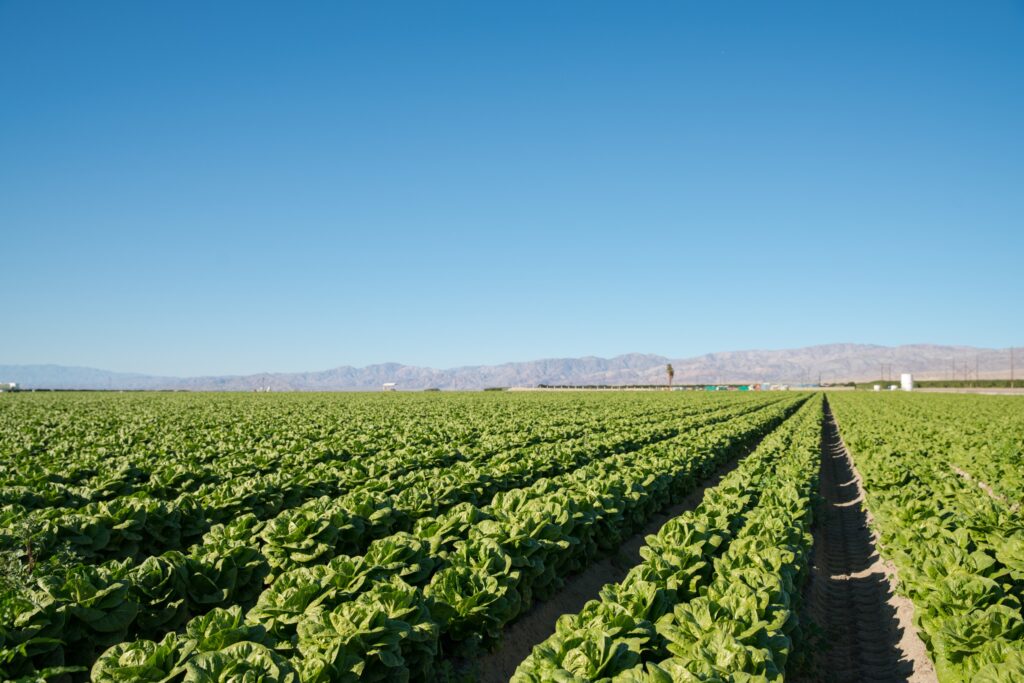Benefits to Specific Crops: Gypsum, Anhydrite, & Limestone

Limestone, anhydrite and gypsum have been used for centuries as an additive to enrich the soil with missing minerals, correct pH values and provide other benefits to specific crops. Gypsum can be used for all crops that requires calcium, especially on alkaline soils where they cannot withstand the pH adjustment from limestone. While we normally associate gypsum as a soil amendment, it’s an excellent source of elemental Calcium and Sulfur.
Crops that Benefit from Gypsum, Anhydrite, & Limestone
- Alfalfa – Gypsum is a source of sulfur. Alfalfa needs 25-50 pounds per acre of actual sulfur to make a good crop. Another report indicated that it helped grow stronger healthier stems.
- Alliums – increased growth rates and bulb size
- Almonds – increased growth and yields
- Barley – increased yields
- Citrus – significantly reduced root rot caused by Phytophthora parasitica, reduced salinity effects of salts and improved plant growth (citrus is salt sensitive)
- Coffee – increased yields
- Corn – 25% higher yields, corn needs about 25-50 pounds of actual sulfur per acre that gypsum can provide
- Cranberries – increased yields, less disease
- Desert Salt Grass (Distichilis spicata var. stricta) – gypsum increased growth rates and increased biomass, corrected nutrient imbalances due to sodium.
- Ginseng – did not affect tissue calcium but a significant increase in both shoot growth and root dry weight.
- Grapes – in California gypsum has been used for over 25 years. Used by many wineries to increase production.
- Lawns – 50 pounds per 1,000 square feet or one ton/acre
- Legumes – require lots of sulfur to form nitrogen fixing nodules on the roots.Gypsum has been particularly useful to peanut farmers and to some extent to watermelon farmers.
- Lilium sp. – reduced upper leaf necrosis (associated with a calcium deficiency) Marsh vegetation and wetlands remediation – had significantly higher dry matter production than the control without gypsum
- Papaw – increased total lateral branching by 60-73% as compared to unamended control and total dry matter accumulation and net uptake of N, P, and K per tree was 100% greater
- Peanuts – 600-880 pounds per acre have been usedThe peanuts grown had higher calcium content but less zinc. All peanuts grown in gypsum treated fields had less Aflatoxin produced on them when compared to unsupplemented peanuts.
- Potatoes
- Significantly reduced incidence of internal brown spot and soft rot, in several locations around the country.
- The best control of the disease of common scab of potato (S. aureofaciens) was obtained by soil application of gypsum (25 g and 12.5 g/pot), and a corresponding increase in yield
- The mean tuber yield response due to sulfur addition was 1.1 t/ha. Addition of sulfur (S) by gypsum was effective in overcoming the sulfur deficiency symptoms and in increasing the sulfur concentration in the leaves.
- One study found that growers using 500-1,200 pounds of gypsum per acre had potatoes with stronger cells, they were more uniform in appearance, a decrease in internal brown spotting, and increased storage time
- Strawberries – increased yield and reduced soil disease
- Tomatoesearlier ripened fruit with larger fruit
- the fruit also had higher levels of some nutrients
- worked better in reducing blossom end rot as compared to other calcium sources calcium chloride (CaCl2), calcium nitrate (Ca(NO3)2,), etc.
- Raspberries – it controlled Phytophthora root rot better, significantly increased plant growth, fruit yield, and root growth compared to other methods and control
- Sugarcane – increased growth rates
- Vegetables – cabbage, broccoli, cauliflower, radishes, turnips, kale and onions have all been shown to benefit from gypsum
- Wheat – increased yields
- Wheatgrass (Agropyron elongatum) – gypsum increased growth rates and increased biomass, corrected nutrient imbalances due to sodium.
Plants that can benefit from gypsum include:
- Flowers – clematis, lilacs, irises, delphiniums, alyssum stock, candy-tuft, nasturtium, tulips, gladioli, roses, camellias and gardenias
- Landscape plants – evergreens, rhododendrons, mountain laurel, pin oak, sweet gum and flowering dogwood
- Arbuscular mycorrhizal fungi – increased colonization and growth rates of these beneficial fungi
For More Information
For more information or to purchase a product, please contact:
Oklahoma, Texas panhandle & Kansas
Chris Shetley
Sales Representative
(405) 366-9500 (Office)
(405) 222-8599 (Cell)
Chris.Shetley@Arcosa.com
Washington, Oregon, Nevada, California and surrounding area
Tim Stanfield
National Sales Manager
479-236-9575
Tim.Stanfield@arcosa.com
Prilled Products for Agricultural Applications
Jim Madsen
Marketing Director
(405) 366-9587 (Office)
Jim.Madsen@Arcosa.com
Limestone, anhydrite and gypsum have been used for centuries as an additive to enrich the soil with missing minerals, correct pH values and provide other benefits to specific crops.